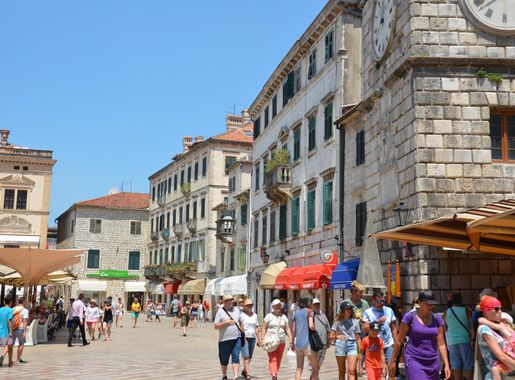
Kotor: The Gem of the Adriatic
Discover Kotor, Montenegro: A medieval gem nestled between mountains and the Adriatic Sea, offering rich history, stunning views, and vibrant local culture.
Nestled between majestic mountains and the sparkling Adriatic Sea, Kotor is a city that feels like it has stepped out of a fairy tale. Its well-preserved medieval architecture, winding cobblestone streets, and ancient city walls make it a delight for history enthusiasts and casual wanderers alike. The old town of Kotor is a UNESCO World Heritage Site, and every corner of this enchanting place has a story to tell. The Bay of Kotor, often mistaken for a fjord, is one of the most striking natural harbors in Europe. The serene waters are perfect for a leisurely boat trip, offering splendid views of the surrounding mountains and the charming villages dotting the coastline. For the more adventurous, hiking up to the Castle of San Giovanni rewards you with breathtaking panoramic views of the bay and the red-roofed town below. Kotor's vibrant culture is showcased in its bustling markets, lively festivals, and welcoming locals. The annual Kotor Carnival and the Summer International Fashion Festival are just a few examples of the city's rich cultural tapestry. The local cuisine, a delightful blend of Mediterranean and Balkan flavors, is another highlight. Make sure to try local specialties like grilled seafood, prosciutto, and the famous Kotor cheese.
Local tips in Kotor
- Wear comfortable shoes as you will be walking on cobblestone streets and climbing stairs.
- Visit early in the morning or late in the afternoon to avoid the crowds, especially during the summer.
- Take a boat tour to fully appreciate the beauty of the Bay of Kotor.
- Try to explore the local markets for unique souvenirs and fresh local produce.
- Don't miss the hike up to the Castle of San Giovanni for stunning views of the city and bay.
Kotor: The Gem of the Adriatic
Nestled between majestic mountains and the sparkling Adriatic Sea, Kotor is a city that feels like it has stepped out of a fairy tale. Its well-preserved medieval architecture, winding cobblestone streets, and ancient city walls make it a delight for history enthusiasts and casual wanderers alike. The old town of Kotor is a UNESCO World Heritage Site, and every corner of this enchanting place has a story to tell. The Bay of Kotor, often mistaken for a fjord, is one of the most striking natural harbors in Europe. The serene waters are perfect for a leisurely boat trip, offering splendid views of the surrounding mountains and the charming villages dotting the coastline. For the more adventurous, hiking up to the Castle of San Giovanni rewards you with breathtaking panoramic views of the bay and the red-roofed town below. Kotor's vibrant culture is showcased in its bustling markets, lively festivals, and welcoming locals. The annual Kotor Carnival and the Summer International Fashion Festival are just a few examples of the city's rich cultural tapestry. The local cuisine, a delightful blend of Mediterranean and Balkan flavors, is another highlight. Make sure to try local specialties like grilled seafood, prosciutto, and the famous Kotor cheese.
When is the best time to go to Kotor?
Iconic landmarks you can’t miss
Kampana Tower
Discover the breathtaking views and historical significance of Kampana Tower in Kotor, Montenegro, a must-visit landmark for every traveler.
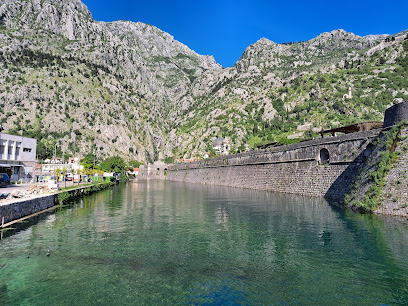
Kotor Fortress
Discover Kotor Fortress, a medieval gem offering stunning views, rich history, and a unique glimpse into Montenegro's past.
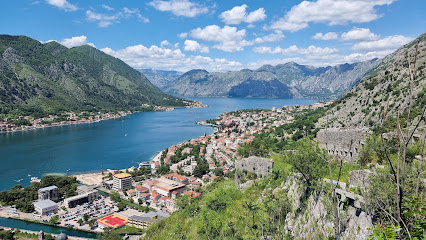
Kotor beach
Discover Kotor Beach in Montenegro: a stunning coastal paradise with crystal-clear waters and breathtaking mountain views, perfect for relaxation and adventure.
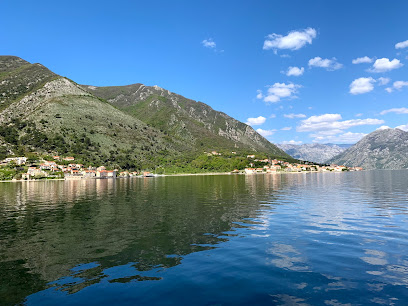
St. Tryphon's Cathedral
Explore Kotor's exquisite St. Tryphon's Cathedral, a historical masterpiece blending stunning architecture with spiritual heritage.

Mausoleum of Petar II Petrovic-Njegosh
Explore the Mausoleum of Petar II Petrovic-Njegosh, a historical landmark in Montenegro that offers breathtaking views and rich cultural heritage.
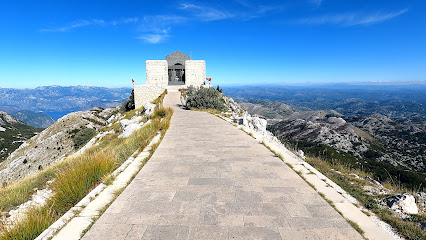
Kotor Serpentine
Discover the breathtaking beauty of Kotor Serpentine, a stunning mountain pass offering spectacular views and unforgettable adventures in Montenegro.
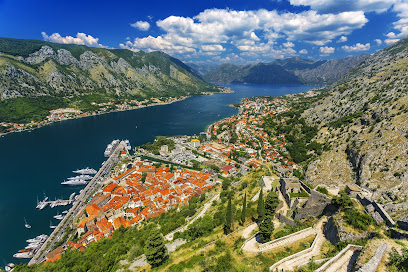
San Giovanni
Explore the historical marvel of San Giovanni Fortress in Špiljari, Montenegro, where breathtaking views meet rich cultural heritage.
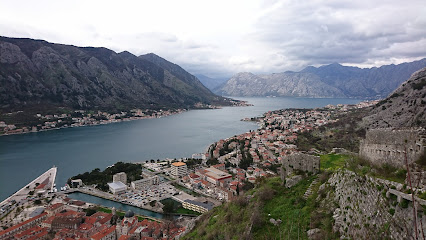
Kotor Old City Walls
Discover the historic Kotor Old City Walls, a breathtaking blend of history, architecture, and stunning views in Montenegro.
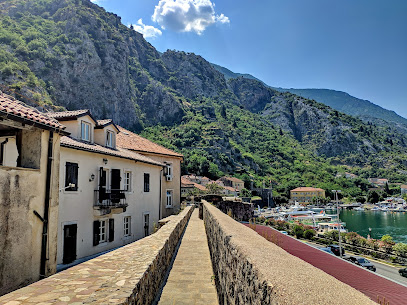
Kotor Cats Museum
Discover the enchanting Kotor Cats Museum, where feline charm and cultural heritage intertwine in a delightful exhibition of art and history.

Hostel Old Town Kotor
Experience the vibrant atmosphere and rich culture of Kotor at Hostel Old Town, your perfect base for exploring Montenegro's stunning coastal beauty.
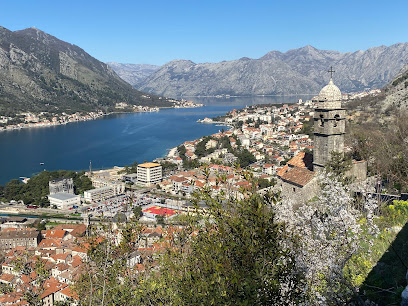
Best View of Kotor
Experience the breathtaking views of Kotor Bay from the Best View of Kotor, a must-see observation deck in Montenegro's stunning landscape.
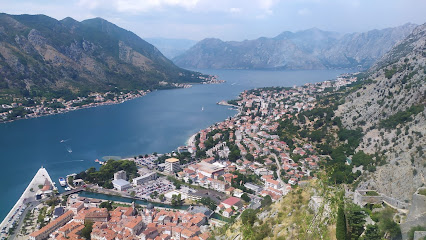
Sea Gate
Explore the Sea Gate of Kotor, a stunning historical landmark that connects you to the rich culture and breathtaking landscapes of Montenegro.
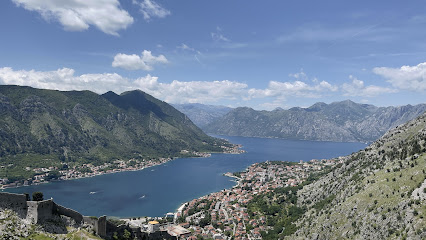
Kotor Cable Car
Experience breathtaking views and exhilarating heights at the Kotor Cable Car, a must-visit attraction in stunning Montenegro.
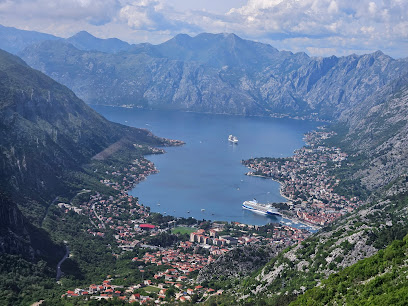
Fortress Gorazda
Discover the rich history and stunning views at Fortress Gorazda, a must-visit tourist attraction in beautiful Skaljari, Montenegro.
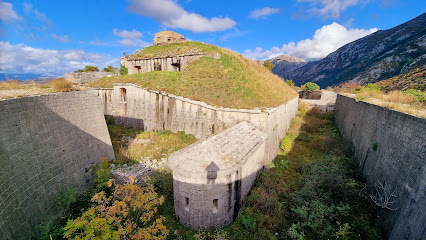
Saint Luke’s Church
Explore the serene beauty and historical significance of Saint Luke's Church in Kotor, Montenegro, a must-visit Orthodox landmark.
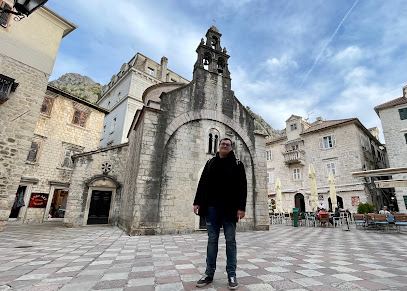
Unmissable attractions to see
Ostrog Orthodox Monastery
Discover the breathtaking Ostrog Orthodox Monastery in Montenegro, a spiritual haven nestled in the cliffs, where history and nature converge.
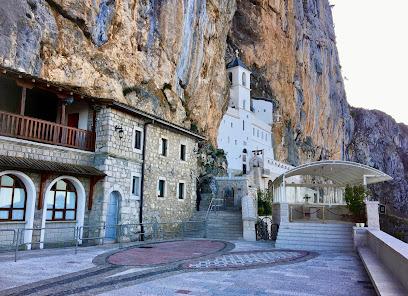
Porto Montenegro
Explore the luxurious Porto Montenegro: a stunning marina destination offering upscale dining, shopping, and breathtaking Adriatic views.
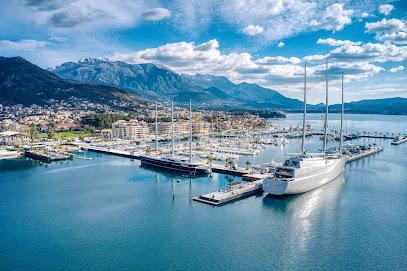
Fortress Old Bar
Discover the captivating history and breathtaking views at Fortress Old Bar, a must-visit landmark in Montenegro's stunning landscape.
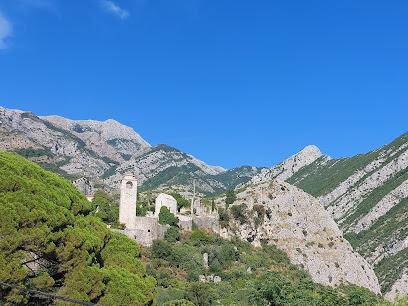
Lovćen National Park
Discover the captivating landscapes and rich heritage of Lovćen National Park, a natural paradise in Montenegro perfect for every traveler.
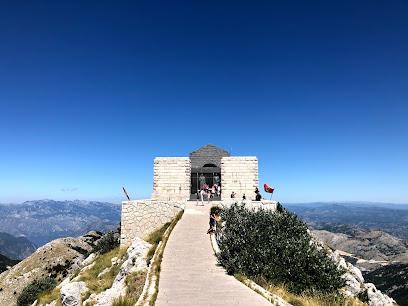
Kampana Tower
Discover the historic Kampana Tower in Kotor, Montenegro, offering breathtaking views and a fascinating glimpse into the city's rich heritage.
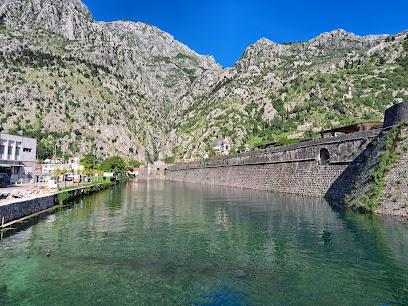
Hercegovačka Gračanica Temple
Explore the architectural beauty and spiritual serenity of Hercegovačka Gračanica Temple in Trebinje, a must-visit cultural gem for travelers.
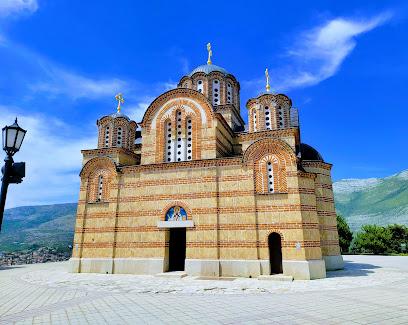
Jaz Beach
Discover the beauty of Jaz Beach in Montenegro, where golden sands and azure waters create a perfect escape for relaxation and adventure.
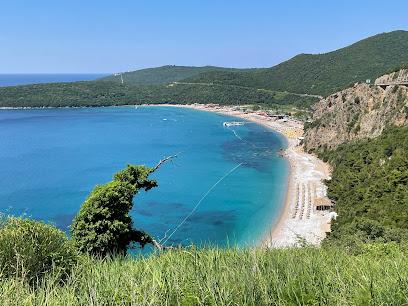
Ferry Kamenari
Discover the stunning Bay of Kotor with the Ferry Kamenari, a scenic and affordable gateway connecting the beautiful villages of Montenegro.
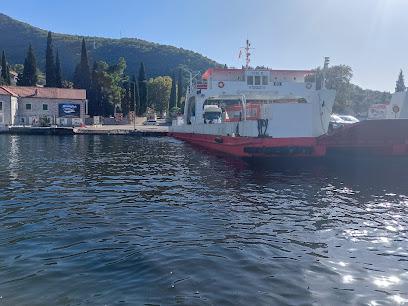
Pasjača Beach
Experience the serene beauty of Pasjača Beach in Popovići, a hidden gem offering stunning views and crystal-clear waters perfect for relaxation and adventure.

Žanjic Beach
Discover Zanjic Beach in Montenegro: A serene paradise with crystal-clear waters, stunning landscapes, and delightful local cuisine awaits your visit.
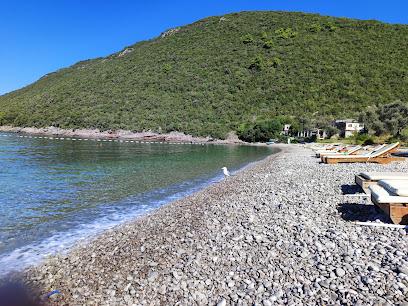
Ploce beach
Discover the serene beauty of Ploce Beach in Krimovica, Montenegro, where crystal-clear waters meet stunning landscapes for the perfect getaway.
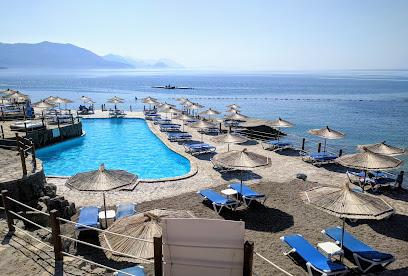
Beach Luchice
Experience the serene beauty of Beach Luchice in Petrovac, Montenegro, where soft sands meet crystal-clear waters for the perfect seaside escape.
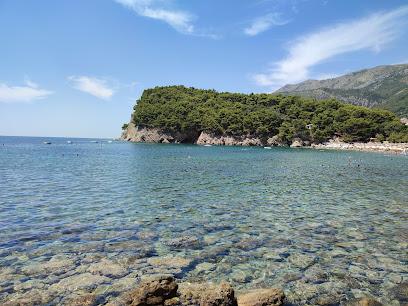
Saint Tryphon's Cathedral
Explore the historical and architectural wonder of Saint Tryphon's Cathedral in Kotor, Montenegro, a UNESCO World Heritage site rich in culture.
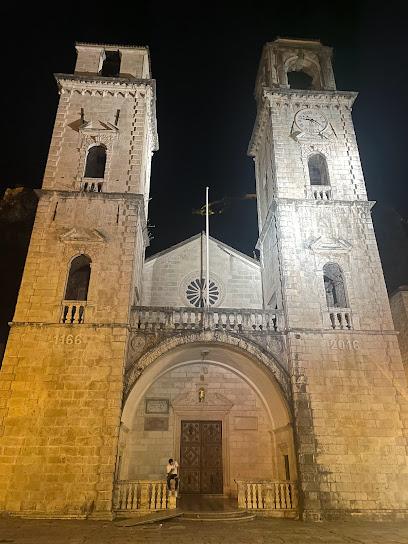
Pavlova Strana Rijeka Crnojeviča Viewpoint
Discover the stunning landscapes at Pavlova Strana Rijeka Crnojevića Viewpoint, an unforgettable destination for nature lovers in Montenegro.
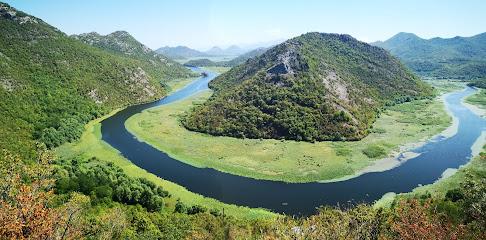
Blue Cave
Discover the magical Blue Cave of Montenegro, a stunning natural wonder with azure waters and breathtaking scenery perfect for adventure seekers.

Essential places to dine
BBQ Tanjga
Discover authentic Montenegrin barbecue at BBQ Tanjga in Kotor - where flavor meets tradition amidst stunning landscapes.
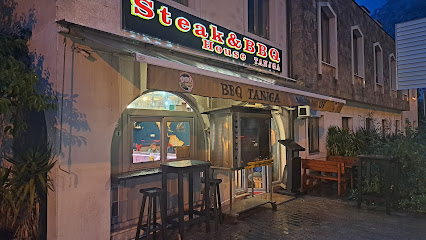
La Catedral Pasta Bar
Discover La Catedral Pasta Bar in Kotor - where exquisite homemade pasta meets warm hospitality in Montenegro's stunning coastal town.
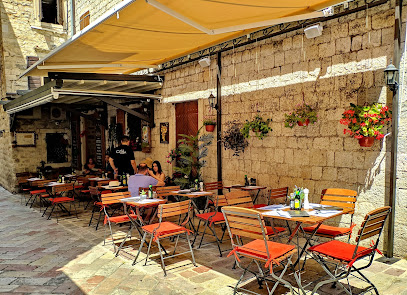
Restaurant City
Savor authentic Montenegrin cuisine at Restaurant City in Kotor—where family-friendly dining meets stunning views.
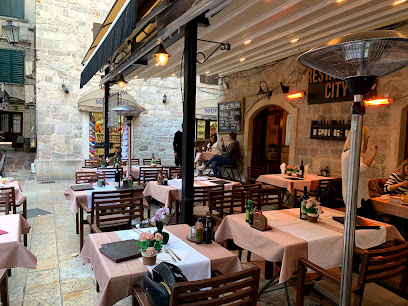
Pizzeria Pronto
Experience the flavors of Italy at Pizzeria Pronto - Kotor's top destination for authentic pizza and stunning views.
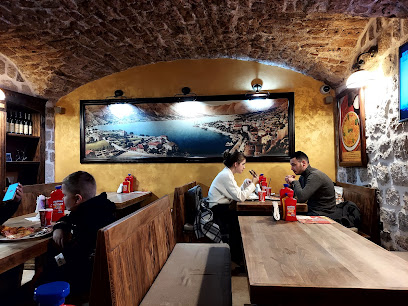
Restobar Taraca
Discover the vibrant flavors of Montenegro at Restobar Taraca—where culinary creativity meets local tradition in a cozy setting.
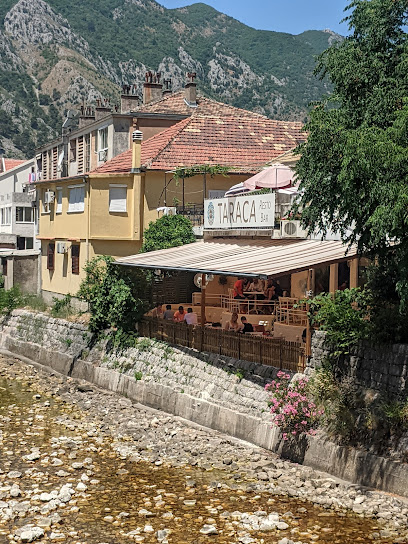
Konoba Scala Santa
Experience authentic Montenegrin cuisine with stunning views at Konoba Scala Santa in the Bay of Kotor.
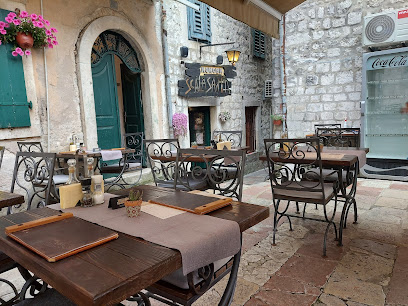
Marenda Steak House
Experience mouthwatering steaks in a cozy atmosphere at Marenda Steak House in Skaljari - a true gem of Montenegro's culinary landscape.
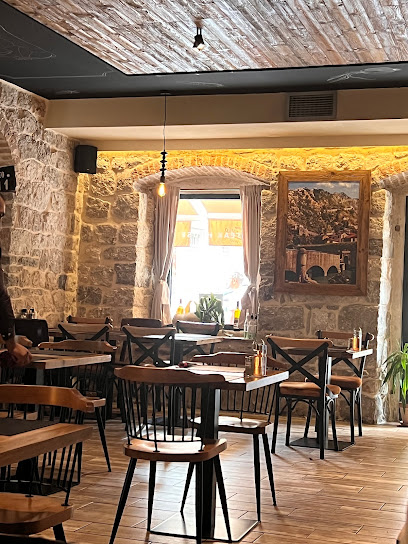
Platanus
Discover authentic Montenegrin cuisine at Platanus in Dobrota - where fresh ingredients meet stunning Adriatic views.
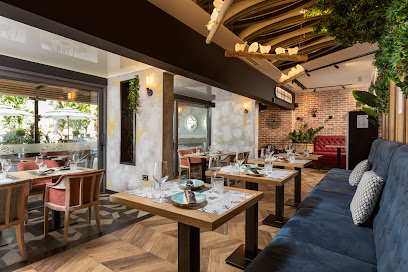
Ladovina Kitchen & Wine Bar
Experience authentic Montenegrin cuisine at Ladovina Kitchen & Wine Bar in Kotor – where every dish tells a story.

Restoran Cesarica
Discover authentic Montenegrin flavors at Restoran Cesarica in Kotor’s charming Old Town.
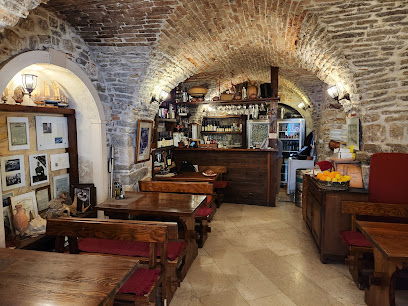
Restaurant PRŽUN
Discover culinary excellence at Restaurant PRŽUN in Kotor—where seafood meets health-conscious cuisine amid stunning historical surroundings.

Konoba Akustik
Discover the essence of Montenegrin cuisine at Konoba Akustik in Kotor - where tradition meets flavor amidst stunning coastal views.
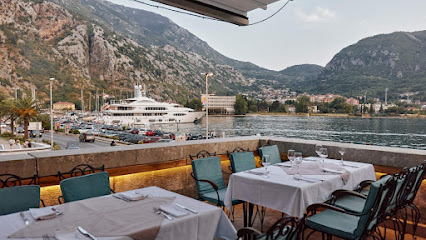
Konoba Roma
Savor authentic Montenegrin flavors at Konoba Roma – where tradition meets taste in the heart of Kotor.
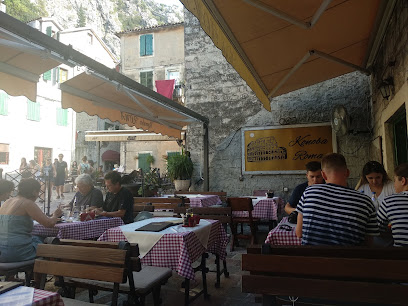
Restaurant Galion
Discover Restaurant Galion in Kotor – where exquisite Mediterranean cuisine meets breathtaking views of the Adriatic Sea.
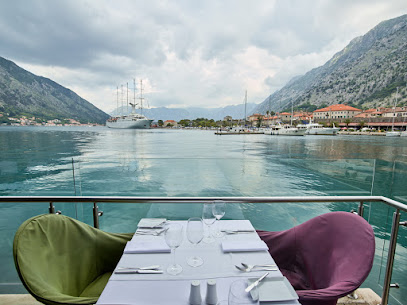
Sara
Discover authentic Italian pizza in Kotor, Montenegro – where every slice is crafted with fresh ingredients and love.

Markets, malls and hidden boutiques
Shopping Centre Kamelija
Explore Shopping Centre Kamelija in Kotor, Montenegro - a vibrant shopping paradise with local and international brands amidst stunning coastal views.
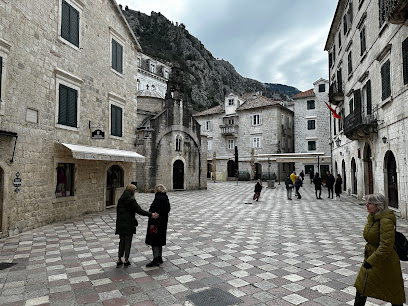
Cats Of Kotor
Discover unique, handmade souvenirs inspired by Kotor's beloved cats in this charming souvenir store in the heart of Stari Grad.
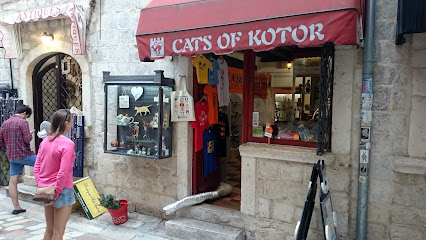
Hard Rock Cafe - Souvenir Rock Shop
Explore the Hard Rock Cafe - Souvenir Rock Shop in Kotor for unique memorabilia, stylish apparel, and unforgettable gifts celebrating rock and roll.
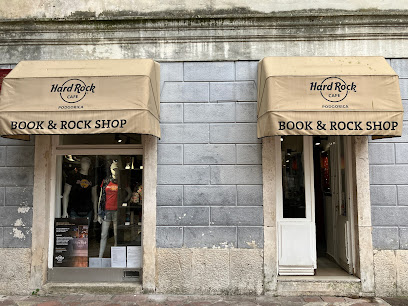
Намфлег Котор накит и сатови
Discover unique handcrafted jewelry at Namfleg Kotor, where tradition meets elegance in the heart of Montenegro's historic Stari Grad.

Kotorska Suvenirnica
Discover unique Montenegrin souvenirs at Kotorska Suvenirnica, where local craftsmanship meets vibrant culture in the heart of Kotor.

Souvenir Shop Montenegro
Explore Souvenir Shop Montenegro in Kotor for unique keepsakes that embody the spirit and culture of this stunning destination.
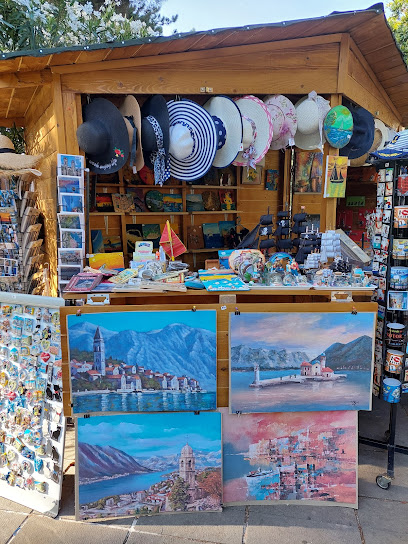
Danijela’s Shop
Discover unique handmade souvenirs at Danijela’s Shop in Kotor, Montenegro – a perfect blend of culture and creativity.
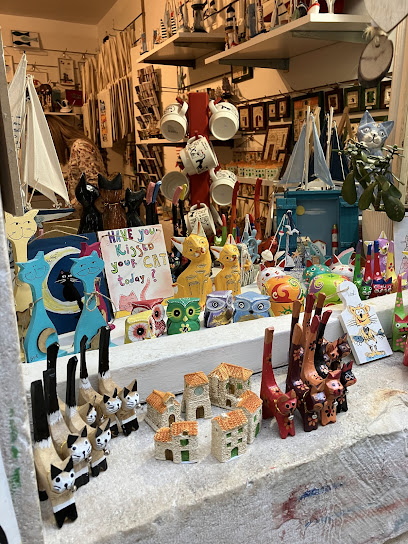
Luxury Shopping Center
Discover Kotor's Luxury Shopping Center – A Fusion of High-End Retail and Cultural Heritage in the Heart of Montenegro.
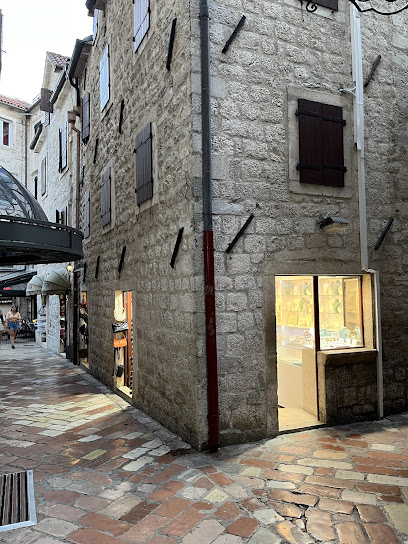
cornelia souvenir
Discover the essence of Montenegro at Cornelia Souvenir in Kotor, where unique gifts and local treasures await every traveler.

Kotor Souvenir
Discover authentic Montenegrin crafts and local delicacies at Kotor Souvenir, the perfect stop for unique gifts in Kotor’s historic old town.
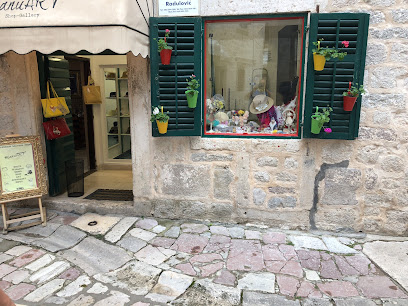
Fine&Wine
Explore Fine&Wine in Kotor for an authentic taste of Montenegro's finest wines and gourmet delights, perfect for every palate.
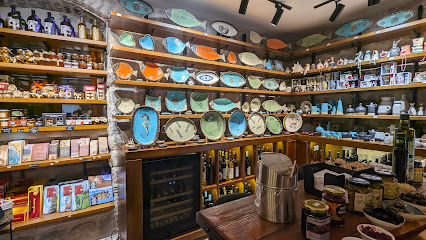
Sungun Souvenir Shop
Explore the Sungun Souvenir Shop in Kotor, where authentic Montenegrin gifts and local treasures await every traveler.
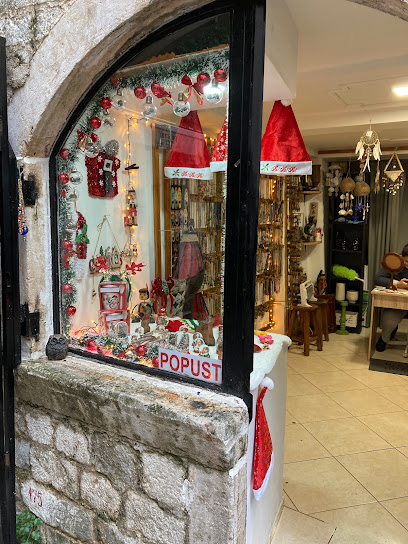
Vetus Oppidum ANTIQUE
Explore the treasures of the past at Vetus Oppidum ANTIQUE, Kotor's premier antique store filled with unique artifacts and rich history.
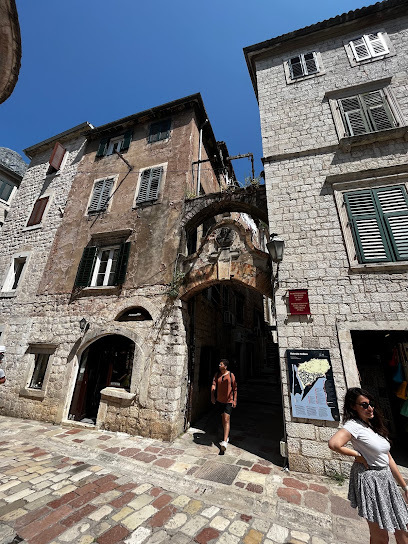
Qbik By KD Fashion Boutique
Explore Qbik By KD Fashion Boutique in Kotor for a unique shopping experience that blends local artistry with contemporary fashion trends.
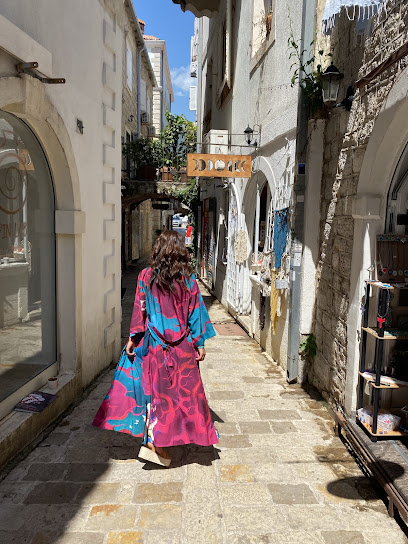
Vipex (Second Hand Shop Kotor)
Explore Vipex in Kotor for a unique second-hand shopping experience filled with treasures and local charm.
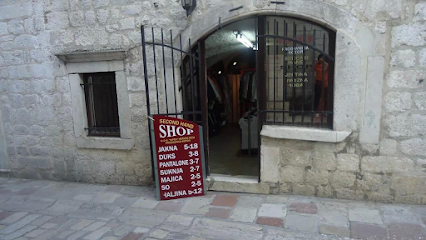
Essential bars & hidden hideouts
BBQ Tanjga
Discover Kotor's culinary treasure at BBQ Tanjga, where authentic Montenegrin barbecue meets stunning views and warm hospitality.
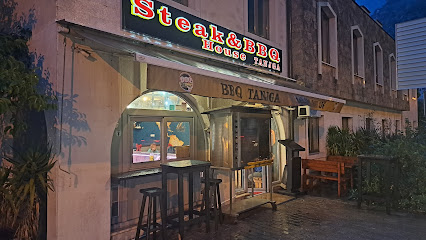
The Nitrox Pub & Eatery
Experience the vibrant atmosphere and exquisite cocktails at The Nitrox Pub & Eatery in Kotor, Montenegro's beloved cocktail destination.
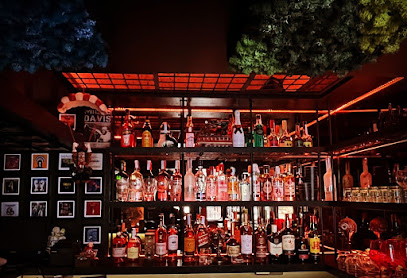
The Nitrox Pub & Eatery
Discover the vibrant nightlife of Kotor at The Nitrox Pub & Eatery, where cocktails, local beers, and a cozy atmosphere await your arrival.
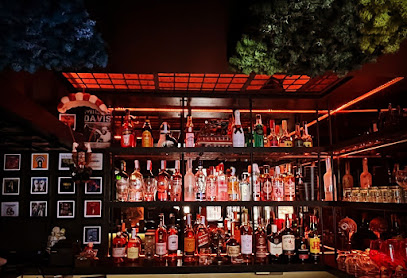
La Catedral Pasta Bar
Discover the enchanting culinary experience at La Catedral Pasta Bar in Kotor, where authentic Italian pasta meets local Montenegrin flavors.
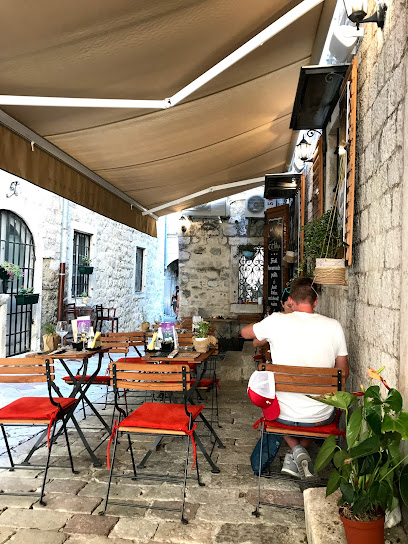
Restobar Taraca
Discover the vibrant flavors of Restobar Taraca in Dobrota, Montenegro – a culinary gem for vegan and vegetarian delights.
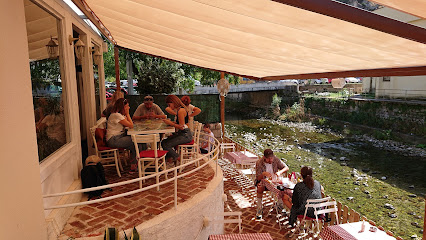
Ladovina Kitchen & Wine Bar
Experience the best of Montenegrin cuisine at Ladovina Kitchen & Wine Bar, a delightful restaurant in the heart of Kotor offering local flavors and fine wines.
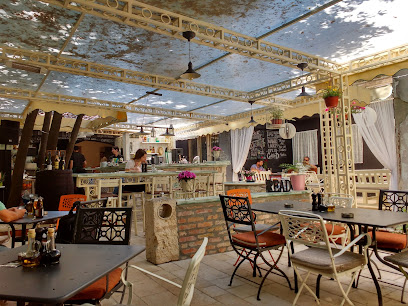
The Square Pub
Discover the vibrant atmosphere and delicious Montenegrin cuisine at The Square Pub in Kotor, a must-visit for food lovers and travelers alike.
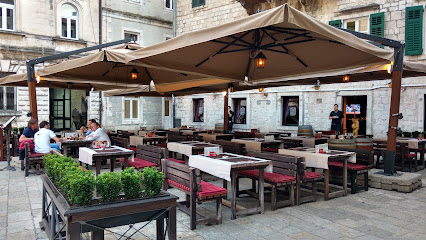
Ombra Restaurant
Discover Ombra Restaurant in Kotor, where Mediterranean flavors meet organic ingredients in a cozy and welcoming atmosphere.
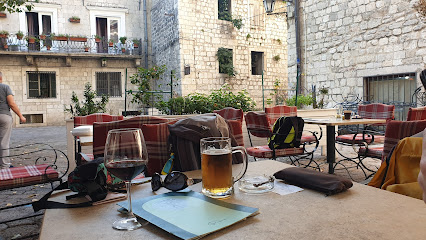
Lav Gastro Bar
Experience the vibrant flavors of Montenegro at Lav Gastro Bar, where culinary innovation meets traditional charm in the heart of Kotor.
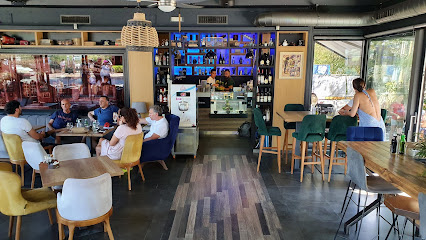
Jazz Club Evergreen
Immerse yourself in the vibrant atmosphere of Jazz Club Evergreen, Kotor's premier destination for unforgettable live jazz music and delightful drinks.
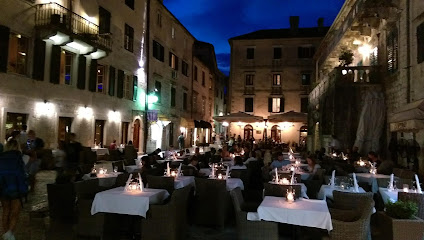
Pub Old Town Kotor
Discover the lively charm of Pub Old Town Kotor, where local culture meets vibrant nightlife in the heart of Montenegro's historic town.
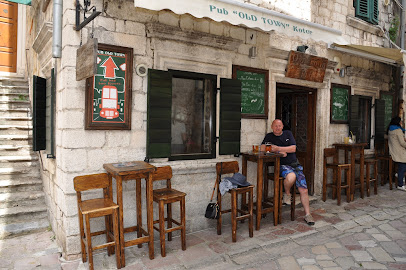
Old Winery Wine Bar
Experience the authentic flavors of Montenegro at Old Winery Wine Bar in Kotor, where every glass tells a story.
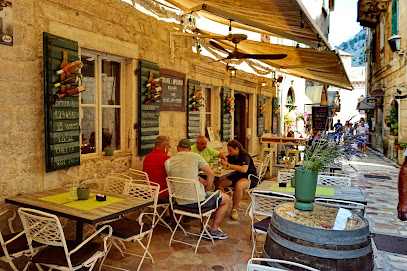
The Harbour Pub
Discover the charm of Kotor at The Harbour Pub, where local cuisine meets stunning bay views in a cozy atmosphere.
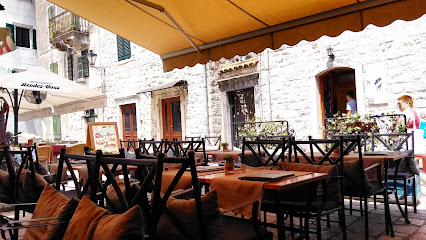
Letrika Caffe Bar
Discover the lively ambiance and delightful drinks at Letrika Caffe Bar, a must-visit in Kotor's historic old town.
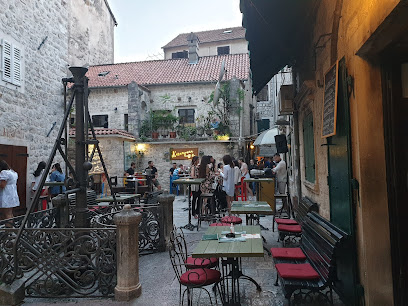
Old Town Little bay
Discover Old Town Little Bay: A Culinary Haven in Kotor Offering Exquisite Montenegrin Cuisine with Breathtaking Bay Views.

Local Phrases
-
- HelloZdravo
[Zdrah-voh] - GoodbyeDoviđenja
[Doh-vee-jen-ya] - YesDa
[Dah] - NoNe
[Neh] - Please/You're welcomeMolim
[Moh-leem] - Thank youHvala
[Hvah-lah] - Excuse me/SorryIzvinite
[Eez-vee-nee-teh] - How are you?Kako si?
[Kah-koh see?] - Fine. And you?Dobro. A ti?
[Doh-bro. Ah tee?] - Do you speak English?Govorite li engleski?
[Goh-voh-ree-teh lee eng-gles-kee?] - I don't understandNe razumijem
[Neh rah-zoo-mee-yem]
- HelloZdravo
-
- I'd like to see the menu, pleaseMolio bih jelovnik, molim
[Moh-lee-oh bee yeh-lohv-neek, moh-leem] - I don't eat meatNe jedem meso
[Neh yeh-dem meh-so] - Cheers!Živjeli!
[Zhee-vyeh-lee] - I would like to pay, pleaseŽelim platiti, molim
[Zheh-leem plah-tee-tee, moh-leem]
- I'd like to see the menu, pleaseMolio bih jelovnik, molim
-
- Help!Pomoć!
[Poh-mohch] - Go away!Idi odavde!
[Ee-dee oh-dahv-deh] - Call the Police!Pozovite policiju!
[Poh-zoh-vee-teh poh-lee-tsee-yoo] - Call a doctor!Pozovite doktora!
[Poh-zoh-vee-teh dohk-toh-rah] - I'm lostIzgubio sam se
[Eez-goo-byoh sahm seh] - I'm illBolestan sam
[Boh-leh-stahn sahm]
- Help!Pomoć!
-
- I'd like to buy...Želim kupiti...
[Zheh-leem koo-pee-tee] - I'm just lookingSamo gledam
[Sah-moh gleh-dahm] - How much is it?Koliko košta?
[Koh-lee-koh koh-stah?] - That's too expensiveTo je previše skupo
[Toh yeh preh-vee-sheh skoo-poh] - Can you lower the price?Možete li spustiti cijenu?
[Moh-zheh-teh lee spoos-tee-tee tsee-yeh-noo?]
- I'd like to buy...Želim kupiti...
-
- What time is it?Koliko je sati?
[Koh-lee-koh yeh sah-tee?] - It's one o'clockJedan je sat
[Yeh-dahn yeh saht] - Half past (10)Pola (deset)
[Poh-lah (deh-set)] - MorningJutro
[Yoo-troh] - AfternoonPopodne
[Poh-pohd-neh] - EveningVeče
[Veh-cheh] - YesterdayJuče
[Yoo-cheh] - TodayDanas
[Dah-nahs] - TomorrowSutra
[Soo-trah] - 1Jedan
[Yeh-dahn] - 2Dva
[Dvah] - 3Tri
[Tree] - 4Četiri
[Cheh-tee-ree] - 5Pet
[Peh-t] - 6Šest
[Shehst] - 7Sedam
[Seh-dahm] - 8Osam
[Oh-sahm] - 9Devet
[Deh-veht] - 10Deset
[Deh-set]
- What time is it?Koliko je sati?
-
- Where's a/the...?Gde je...
[Gdeh yeh] - What's the address?Koja je adresa?
[Koh-yah yeh ah-dreh-sah] - Can you show me (on the map)?Možete li mi pokazati (na mapi)?
[Moh-zheh-teh lee mee poh-kah-zah-tee (nah mah-pee)] - When's the next (bus)?Kada je sledeći (autobus)?
[Kah-dah yeh sleh-deh-chee (ow-toh-boos)] - A ticket (to ....)Jednu kartu (do ...)
[Yeh-dnoo kahr-too (doh)]
- Where's a/the...?Gde je...
History of Kotor
-
Kotor, originally known as Acruvium, was founded by the Romans in the 2nd century BC. Located in a strategic bay, it served as an important maritime and trading center. The town's early history is marked by Roman and Byzantine influences, which are still evident in its architecture and urban layout.
-
During the medieval period, Kotor became a significant political and economic hub. In 1420, the city voluntarily came under the protection of the Venetian Republic, which lasted until 1797. The Venetians fortified the city with impressive walls and built many of its iconic structures, including churches and palaces, leaving an enduring architectural legacy.
-
Throughout its history, Kotor faced numerous threats from the Ottoman Empire. Despite several attempts, the Ottomans never managed to conquer the city. In the early 19th century, Kotor became a focal point during the Napoleonic Wars. After the fall of Venice, Kotor was briefly occupied by French forces before being handed over to the Austrian Empire.
-
From 1815 to 1918, Kotor was part of the Austro-Hungarian Empire, during which time it experienced significant development. The Austrians enhanced the city's fortifications and infrastructure, making it an important naval base. This period also saw the flourishing of cultural and educational institutions.
-
Kotor played a strategic role during World War I, with its harbor used by the Austro-Hungarian Navy. After the war, Kotor became part of the newly formed Kingdom of Serbs, Croats, and Slovenes, later known as Yugoslavia. The city experienced periods of growth and turmoil during the Yugoslav era, including during World War II and the breakup of Yugoslavia in the 1990s.
-
Today, Kotor is a UNESCO World Heritage Site, recognized for its well-preserved medieval architecture and stunning natural setting. The city's rich history is reflected in its cobblestone streets, ancient walls, and numerous historical buildings. Kotor continues to attract visitors from around the world, drawn by its unique blend of history, culture, and natural beauty.
Kotor Essentials
-
Kotor is accessible via several modes of transportation. The nearest international airport is Tivat Airport, approximately 8 kilometers away. Alternatively, Podgorica Airport is about 90 kilometers from Kotor. From either airport, you can take a taxi, rent a car, or use public transportation to reach the city. Kotor is also a popular stop for cruise ships, and regular bus services connect it to major Montenegrin cities and neighboring countries.
-
Kotor is compact and many attractions are within walking distance. Local taxis are available and relatively affordable for trips within the town and to nearby areas. Buses connect Kotor to other towns in Montenegro, including Budva, Tivat, and Podgorica. Car rentals are an option for those wishing to explore the surrounding regions at their own pace. Bicycles and scooters can also be rented for a more intimate exploration of the town.
-
The official currency in Montenegro is the Euro (EUR). Credit cards are widely accepted in hotels, restaurants, and shops, but it's advisable to carry some cash for smaller establishments and markets. ATMs are readily available throughout Kotor. Currency exchange services can be found in banks and exchange offices.
-
Kotor is generally a safe destination for tourists. However, as with any travel destination, it is important to take standard precautions. Avoid walking alone at night in less populated areas and keep an eye on your belongings in crowded places. There are no specific high-crime neighborhoods targeting tourists, but it's always best to stay vigilant and aware of your surroundings.
-
In case of emergency, dial 112 for immediate assistance. Kotor has local police stations and medical facilities available. It is recommended to have travel insurance that covers medical emergencies. There are pharmacies in the town where you can purchase over-the-counter medications. The nearest hospital is in Kotor, providing comprehensive medical services.
-
Fashion: Do dress modestly, especially when visiting religious sites. Avoid wearing beachwear outside of the beach areas. Religion: Do respect local customs and traditions. Always cover your shoulders and knees when entering churches. Public Transport: Do be respectful and give up your seat to elderly passengers. Don't eat or drink on public transport. Greetings: Do greet people with a handshake and a smile. A slight nod of the head is also a sign of respect. Eating & Drinking: Do try local delicacies such as seafood and local wines. Don't refuse hospitality, as it is considered impolite.
-
To experience Kotor like a local, visit the local markets where you can buy fresh produce and traditional Montenegrin goods. Engage with locals, as they are often friendly and willing to share stories about the town's history and culture. Don't miss climbing the city walls for a panoramic view of Kotor Bay. For a unique experience, take a boat trip to Our Lady of the Rocks, a man-made island with a historic church.
Trending Landmark in Kotor
Nearby Cities to Kotor
-
Things To Do in Tivat
-
Things To Do in Perast
-
Things To Do in Cetinje
-
Things To Do in Budva
-
Things To Do in Herceg Novi
-
Things To Do in Podgorica
-
Things To Do in Nikšić
-
Things To Do in Bar
-
Things To Do in Trebinje
-
Things To Do in Dubrovnik
-
Things To Do in Ulcinj
-
Things To Do in Lezhë
-
Things To Do in Bajram Curri
-
Things To Do in Peja
-
Things To Do in Mostar

